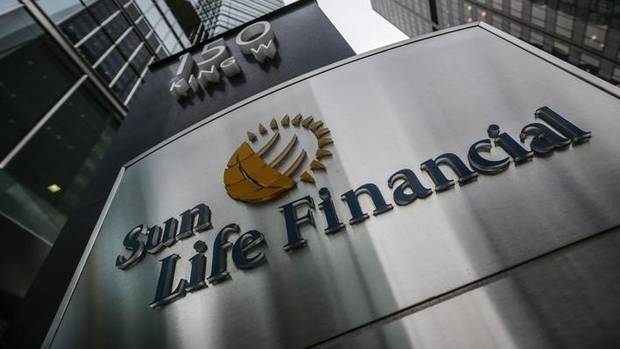by Sonal Desai, Ph.D., Franklin Templeton Investments
Listen to our latest “Talking Markets” podcast. A transcript follows.
Katie Klingensmith: Sonal, you recently published an edition of “On My Mind”, which is your periodic publication with thoughts on the economy and financial markets and this time it was titled, “Bringing the Economy Back from Life Support”.
You emphasised that the size and the efficacy of the US fiscal stimulus would be really critical in determining what kind of recession and what kind of recovery we might hope for in the US. Where are we in terms of economic outlook right now in the US and globally, and how effective has that fiscal and monetary stimulus been?
Sonal Desai: I think that there are a couple of really important differences between what we’re going through right now, relative to what’s happened in the past. Either if you’re looking at the global financial crisis or the multiple comparisons to things like the Great Depression.
First of all, policymakers knew, you have perfect foresight in some sense, at what the adverse economic impact would be of extreme social distancing. They knew that and it would be immediate and massive, and therefore, at least in the US and most of Europe, what we are seeing to differing degrees, immediate and massive policy responses. That’s number one.
The second big difference I’d say at least in the US is that most corporates and businesses so far have assumed that this sudden stop is temporary.
Therefore, if I look at the massive number of layoffs—so the absolutely astounding numbers which we’ve been seeing—temporary layoffs account for nearly 80% of the new job losses that we at least saw in April. This is important because so far both employers and, hopefully, employees are expecting this to be a temporary state of affairs. Now, this is where that massive fiscal stimulus definitely comes in. How effective that’s been, it’s still early, but I think we’re going to start seeing those checks arrive into different households across the economy. It can only give these people life support, it can’t become indefinite. The minute that people think this is going to last into a very long period into the future, those temporary job losses will convert, if you will, into permanent job losses because bankruptcies are what we really need to avoid.
We have had absolutely enormous monetary stimulus, especially in the US, but, I think that ultimately this is going to cushion us as long as this does not go on for months and months.
Katie Klingensmith: So, Sonal, let’s stay with the US for a few minutes. Can you walk us through how different parts of the US economy and the US workforce have been impacted?
Sonal Desai: Unsurprisingly, currently, if I look at, you know, the classic trough sectors, which we would anticipate—leisure, hospitality, wholesale and retail trade, travel—these together account for almost 30% of US employment and of course have shown the biggest negative impact.
Now, however, as we get to the next stage, I would anticipate seeing a little bit more impact on what you would traditionally think about as white-collar jobs, which can be done from home. First instance, absolutely, the white-collar jobs are done from home, people don’t necessarily lose their jobs. But at some stage, these service industries also help to keep the overall economy going, but they need to have business on the other side of this. What I mean is, if you have a law firm of 700 lawyers who are staying at home, if you have a massive reduction in the size of activity, some of these lawyers will at least need to take pay cuts.
I think you’re going to see an expanding impact from this shutdown, which started perhaps at some of the lowest-skilled workers. It will start feeding upwards, I can’t emphasise enough how important it’s going to be to get that fiscal support out, but more importantly to start creating a glide path towards reopening some of these centres.
Katie Klingensmith: So, thinking about that mix of policy responses and the planning into the future, where are you seeing the most effective and perhaps the least effective policy mixes around the world?
Sonal Desai: You have countries like Germany, Denmark, where they’re already beginning to see fairly detailed plans for reopening of parts of the economy, including, interestingly enough, kindergarten and younger children’s schools. This, of course, does have an impact in terms of still working parents because it’s very difficult to imagine opening up large sectors of your economy if you aren’t in a situation where children do have access to childcare and to schooling. So, this is one element and I would call those countries out for seeming to be very methodical and organised in how they’re stepping forward. Austria would come to mind as well.
I would note that some countries, such as Italy, they’ve suffered worst. There seems to be less of a plan in terms of how they are going to bring things back online. And, I would be worried about the scale of what we are going to see in Italy for a protracted period.
In the US itself, I think it might be a mistake to think about the whole of the US as a single country in this respect. We’ve got to keep in mind that the state of California is 40 million strong. That is like a middle- to large- size European country. The state of New York is 20 million strong. If I look at New York, New Jersey and some of the surrounding areas, that’s like a hotspot, which is the size, definitely of a medium- to large- sized European country. What is correct for a state like New York, may or may not be correct for a state like some of the states on the West coast, for example. So I would expect to see a differentiated path forward rather than thinking about a uniform thought.
Katie Klingensmith: Just to transition a bit, how do you think that this crisis is different than the global financial crisis and the Great Depression? We keep hearing more comparisons between what’s going on now and a potential 1929.
Sonal Desai: So, you know, the big difference to me is the speed and the policy reaction. The Fed [US Federal Reserve] actually tightened into the Great Depression. The Great Depression lasted for 10 years and it was close to, you know, well over five years into the Great Depression that we started talking about the fiscal easing and as we all know, of course the Great Depression ended in the second world war.
Now, I think that once we talk about a 10-year experience in the US and compare it to where we are today, it took two weeks. On March 18th, President Trump declared that across the US you would have a shutdown, of kinds, or extreme social distancing. March 27th, we had a US$2.2 trillion fiscal package out. In the interim, we had the Fed come out with a monstrously large QE [quantitative easing] reprogramme, that QE programme, by the way, at this stage, the different QE pieces that the Fed has done—call it QE, call it monetary easing—we’ve blown through QE one, two and three put together. So you know, let’s, let’s keep that in perspective.
We, with enormous speed, came at this in a way which simply didn’t happen during the Great Depression. So while it is tempting to call this the Great Depression, I think that the facts on the ground are not going to bear it out. Of course, we’re going to see probably unemployment rates, which spiked to 15%, anywhere 15%, 17%. How long are they going to stay there? During the Great Depression, for four years unemployment was close to 25%, four years! Now that is simply not where we are today. That’s not the case and I don’t anticipate that that will be the case. That’s number one with the Great Depression.
Number two, a part of the global financial crisis, between when we saw the first signs of the true critical nature of what was happening and when we had QE launched and you had fiscal policy measures taken in the US it took well over a year.
Again, at that time we didn’t have a playbook and the problem, dare I say it, was a lot more complicated from an economic perspective because banks had engaged in a lot of risky behaviour. The financial sector broadly was dealing with a lot of leverage, which was nontransparent. It wasn’t clear. So unraveling that spaghetti ball of, really complicated, derivative-laced instruments took a very long time and that was at the heart of the crisis.
Now I’m not talking about the health issue. The health issue is a completely separate thing. I’m talking about the economic issue and the tools that have been brought to bear. So I would like to think that what we’re seeing right now, there are elements maybe of the Great Depression or the global financial crisis which make it tempting to make an immediate comparison. I don’t think that it’s appropriate. I think that if you look at the shape of the recovery we’ll have, it’s going to look very different from even the GFC, but certainly from the Great Depression.
Katie Klingensmith: Do you think that the recent Fed actions will have negative results down the road?
Sonal Desai: So, let me be very clear. I am not sanguine about either the Fed actions or the fiscal actions in terms of the longer-term consequences. I think both are going to have quite alarming longer-term consequences, as we get to the longer term. But the point, from my perspective, is we need to get there and we don’t need to have a great depression. And if they had done nothing, if they had done nothing, the Fed and the fiscal authorities, then I think the risk of a Great Depression-like scenario becomes very real because once you’ve implemented extreme social distancing and you do get into that vicious downward spiral of bankruptcies and firings and then lower demand and more bankruptcies, you do very quickly spin yourself to a situation which you can’t climb out of.
What we are likely to have after this initial three-month, six-month period, as we work our way out of the current space is we are going to look back at these various fiscal expansions across the developed world. The fiscal expansions, the monetary expansions and we are going to need to go back and try to figure out what the cost of those is. In some cases, what the implications are if you close down borders because, inevitably, there’s some negative impacts to the transmission of goods and services and people across borders and I think that’s a longer-term consequence.
What the impact of all of that could be on the economy is something which we’re going to be studying very carefully. I think a part of me would expect to see elements of what you might consider almost a stagnation situation. That’s one possibility. So once you’ve got your V-shaped recovery at some stage, depending on where we are as an economy, how much people’s preferences have changed—in terms of travel, in terms of going out to restaurants—you might be in the new state of the world where growth is somewhat lower, but at some stage prices might well go up because you’re not importing as much because for various reasons, supply chains have become more permanently damaged. You would try to bring all your goods, production, back to domestic spaces. And this I think we might see around the world because it’s fragility and vulnerability which comes to economies because of globally interconnected supply chains has never been more evident. I think that across the political spectrum there will be a desire to in-source, which will come with higher costs. Well yeah, looking further down the road, which is most important thing. It’s not today’s business, but it will be our business to try and figure out which direction the economy goes in. And, inflation might be a part of that.
Katie Klingensmith: What do you think we can hope for over the course of the next year?
Sonal Desai: I think that there will be parts of the US which will be more ready to reopen from a health perspective. You know, from a cautious perspective, with some social distancing still in place. Just remember, if an auto manufacturer is working at 20% capacity and he was working at 100% capacity, goes to 20%, that’s an 80% decline. Now with the gradual reopening, they go from 20 to 65. In growth terms, you’ve got a massive change, a massive pickup. To me, I think that’s really important. What was being priced in. If you are pricing in five years, a decade, a great depression, I think that’s overpricing what we’re seeing, So yes, against this pretty grim background, it actually shocked me. But it is true. I probably come across as sounding somewhat optimistic.
I don’t think that we will get back to our trend where our GDP [gross domestic product] level would have been if we had continued to grow on trend of around 2-2.5% a year from now. However, will we have recovered? Is there hope that we would have recovered at least the level that we work prior to the collapse? Yes. I think that that’s deeply within the possibility set. And, that’s where the hope is. Yes, it was really horrible things happened. We did something which, which has just never been done before in terms of closing down most of the world. The entire world practically has chosen, as a government decision from the perspective of keeping people’s health secure, just closed down. But yes, that means it can also be reopened.
Katie Klingensmith: Thank you, Sonal, for joining today and providing all of this information.
Host: And thank you for listening to this episode of Talking Markets with Franklin Templeton. If you’d like to hear more, visit our archive of previous episodes and subscribe on iTunes, Google Play, Spotify, or just about any other major podcast provider. And we hope you’ll join us next time, when we uncover more insights from our on-the-ground investment professionals.
Important Legal Information
This material reflects the analysis and opinions of the speakers as of April 15, 2020 and may differ from the opinions of portfolio managers, investment teams or platforms at Franklin Templeton. It is intended to be of general interest only and should not be construed as individual investment advice or a recommendation or solicitation to buy, sell or hold any security or to adopt any investment strategy. It does not constitute legal or tax advice.
The companies and case studies shown herein are used solely for illustrative purposes; any investment may or may not be currently held by any portfolio advised by Franklin Templeton Investments. Past performance does not guarantee future results.
The views expressed are those of the speakers and the comments, opinions and analyses are rendered as of the date of this podcast and may change without notice. The information provided in this material is not intended as a complete analysis of every material fact regarding any country, region, market, industry, security or strategy. Statements of fact are from sources considered reliable, but no representation or warranty is made as to their completeness or accuracy.
Data from third party sources may have been used in the preparation of this material and Franklin Templeton (“FT”) has not independently verified, validated or audited such data. FT accepts no liability whatsoever for any loss arising from use of this information and reliance upon the comments opinions and analyses in the material is at the sole discretion of the user.
Products, services and information may not be available in all jurisdictions and are offered outside the U.S. by other FT affiliates and/or their distributors as local laws and regulation permits. Please consult your own professional adviser for further information on availability of products and services in your jurisdiction.
Issued in the U.S. by Franklin Templeton Distributors, Inc., the principal distributor of Franklin Templeton’s U.S. registered products, which are available only in jurisdictions where an offer or solicitation of such products is permitted under applicable laws and regulation. Issued by Franklin Templeton outside of the US.
Please visit www.franklinresources.com to be directed to your local Franklin Templeton website.
Copyright © 2020 Franklin Templeton. All rights reserved.
What are the Risks?
All investments involve risks, including possible loss of principal. Bond prices generally move in the opposite direction of interest rates. Thus, as the prices of bonds adjust to a rise in interest rates, the share price may decline. Investments in foreign securities involve special risks including currency fluctuations, economic instability and political developments. Investments in emerging market countries involve heightened risks related to the same factors, in addition to those associated with these markets’ smaller size, lesser liquidity and lack of established legal, political, business and social frameworks to support securities markets. Such investments could experience significant price volatility in any given year. High yields reflect the higher credit risk associated with these lower-rated securities and, in some cases, the lower market prices for these instruments. Interest rate movements may affect the share price and yield. Stock prices fluctuate, sometimes rapidly and dramatically, due to factors affecting individual companies, particular industries or sectors, or general market conditions. Treasuries, if held to maturity, offer a fixed rate of return and fixed principal value; their interest payments and principal are guaranteed.
Indices are unmanaged and one cannot invest directly in an index.
There is no assurance that any estimate, forecast or projection will be realised.
This post was first published at the official blog of Franklin Templeton Investments.














